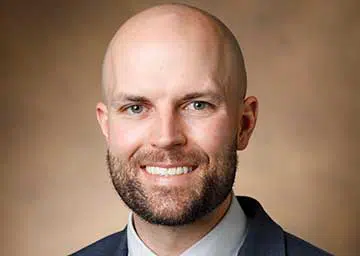Sprained or torn MCL injuries are among the most common ski injuries. The medial collateral ligament (MCL) is located on the inside of your knee and can be sprained or torn when pressure or hard contact stretches the ligament.
If you experience a knee injury while skiing – whether it’s your MCL or something else – it’s essential to pay close attention to your symptoms and seek medical treatment if necessary.
There are a wide variety of knee injuries that can be sustained while skiing or boarding, but only a trained physician or orthopedic specialist can properly examine and diagnose a knee injury. You should seek medical attention if:
- You hear a popping sound or feel a sudden give in your knee at the time of injury.
- You experience severe pain or swelling in the knee.
- You are unable to bear weight on the affected leg.
- You have significant bruising around the knee.
- You have difficulty bending or straightening your knee.
- You notice a deformity or misalignment in your knee.
- Your symptoms do not improve within a few days or continue to worsen.
- You have previously injured your knee or have a history of knee problems.
A doctor will be able to examine your knee, assess the severity of your injury, and recommend appropriate treatment, which may include physical therapy, medication, or surgery. It’s essential to seek medical attention as soon as possible to prevent further damage to your knee and to promote a faster recovery.
What’s the difference between a sprained and torn MCL?
The MCL is a ligament that runs along the inside of the knee and provides stability to the joint. A torn MCL is a specific injury that involves a tear in this ligament. This type of injury is usually caused by a forceful impact to the outside of the knee, such as a tackle in football or a collision while skiing.
Symptoms of a torn MCL may include pain, swelling, and limited range of motion, but the location and severity of the symptoms will depend on the specific injury.
Treatment may involve rest, ice, compression, and elevation (RICE), as well as physical therapy or, in more severe cases, surgery. It is important to seek medical attention if you suspect that you have sustained a sprain or a torn MCL to ensure proper diagnosis and treatment.
Sprained MCL treatment
An orthopedic specialist will generally recommend conservative treatments first, depending on each person’s injury, personal health, and other factors. Among these treatments:
- Rest: Rest the injured knee as much as possible to allow the ligament to heal. Avoid any activities that may cause pain or discomfort.
- Ice: Apply ice to the affected knee for 15-20 minutes at a time, several times a day, to reduce swelling and pain.
- Compression: Use a compression bandage or knee brace to help reduce swelling and provide support to the knee.
- Elevation: Elevate the injured leg above the level of the heart to reduce swelling.
- Pain medication: Over-the-counter pain medication such as acetaminophen or ibuprofen can help relieve pain and reduce inflammation.
- Physical therapy: A physical therapist can develop an exercise program to help strengthen the knee and restore the range of motion. The specific exercises and treatments used in physical therapy will depend on the severity of the sprain and each individual’s needs. Some common physical therapy treatments for a sprained MCL include:
- Range of motion exercises: These exercises help improve flexibility and prevent stiffness in the knee joint.
- Strengthening exercises: Exercises that target the muscles around the knee, such as the quadriceps and hamstrings, can help provide support to the knee joint.
- Balance and stability exercises: These exercises can help improve balance and reduce the risk of re-injury.
Torn MCL Treatment
Treatment options for a torn medial collateral ligament (MCL) also depend on the severity of the injury. For a partial tear or mild MCL injury, nonsurgical treatment may be recommended. For more severe tears, surgery may be necessary.
Nonsurgical treatment options may include some of the same treatments that help a sprain:
- Rest: Avoiding activities that put stress on the knee can help the MCL heal.
- Ice: Applying ice to the knee can help reduce swelling and pain. Again icing 15-20 minutes at a time, several times a day can reduce swelling and pain.
- Compression: Wearing a knee brace or compression sleeve can provide support and reduce swelling.
- Physical therapy: Strengthening exercises can help improve knee stability and reduce the risk of re-injury.
- Anti-inflammatory medication: Nonsteroidal anti-inflammatory drugs (NSAIDs) such as ibuprofen or naproxen can help reduce pain and inflammation.
Surgical treatment options may include:
MCL Surgical Treatment
In some cases, the torn ligament can be surgically repaired with sutures or other techniques.
MCL reconstruction: If the torn MCL cannot be repaired, it may need to be reconstructed using a graft from another part of the body.
Recovery time for a torn MCL can vary depending on the severity of the injury and the type of treatment. In general, recovery may take several weeks to several months. Physical therapy may be necessary after surgery, too – to help restore strength, flexibility, and range of motion to the knee. Your doctor or physical therapist can provide guidance on the appropriate treatment plan and the timeline for your specific injury. The knee specialists at Advanced Orthopedic and Sports Medicine Specialists have specialized training in orthopedic surgery and sports medicine. They can diagnose and treat even the most complicated knee injuries and are supported by a professional staff of Physician Assistants, Medical Assistants, X-Ray Technicians, and Administrative Personnel. Make an appointment today.

















